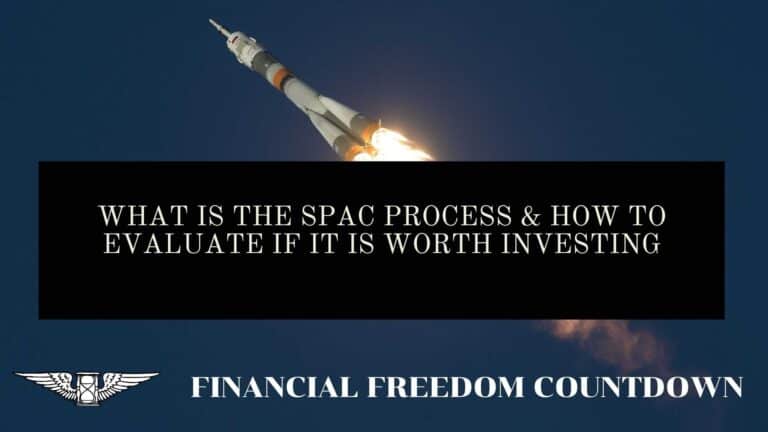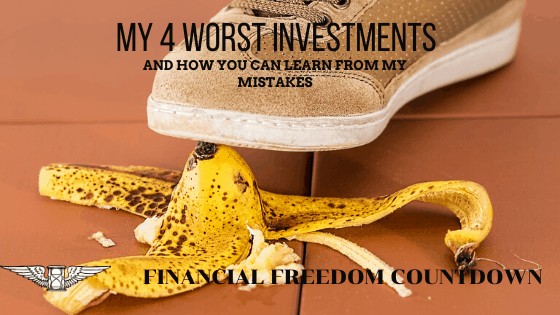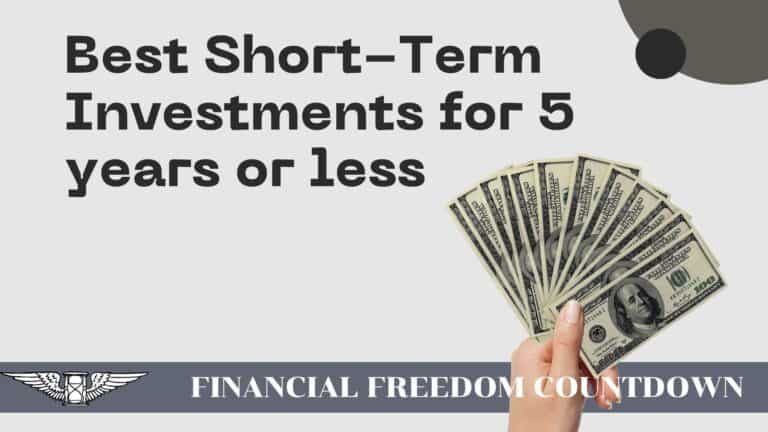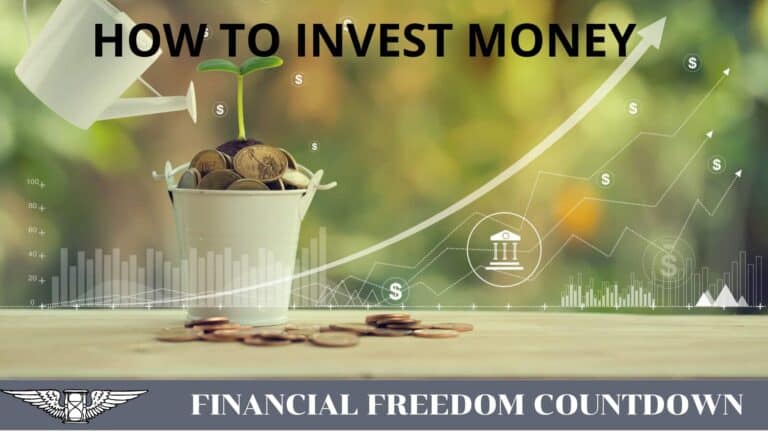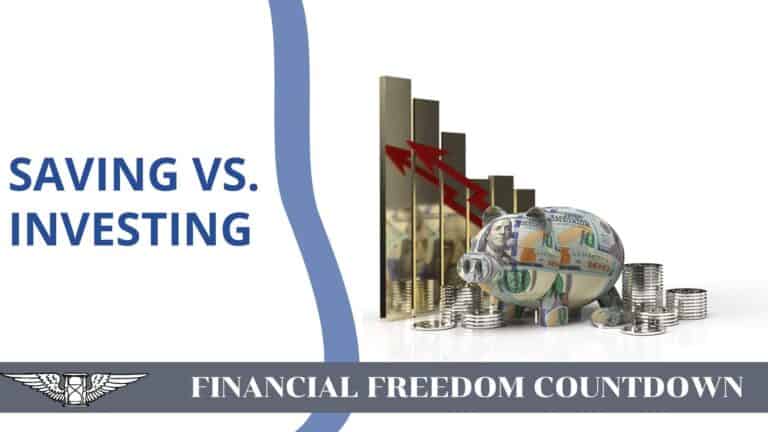Is Investing In Art A Smart Move? How To Invest In Art
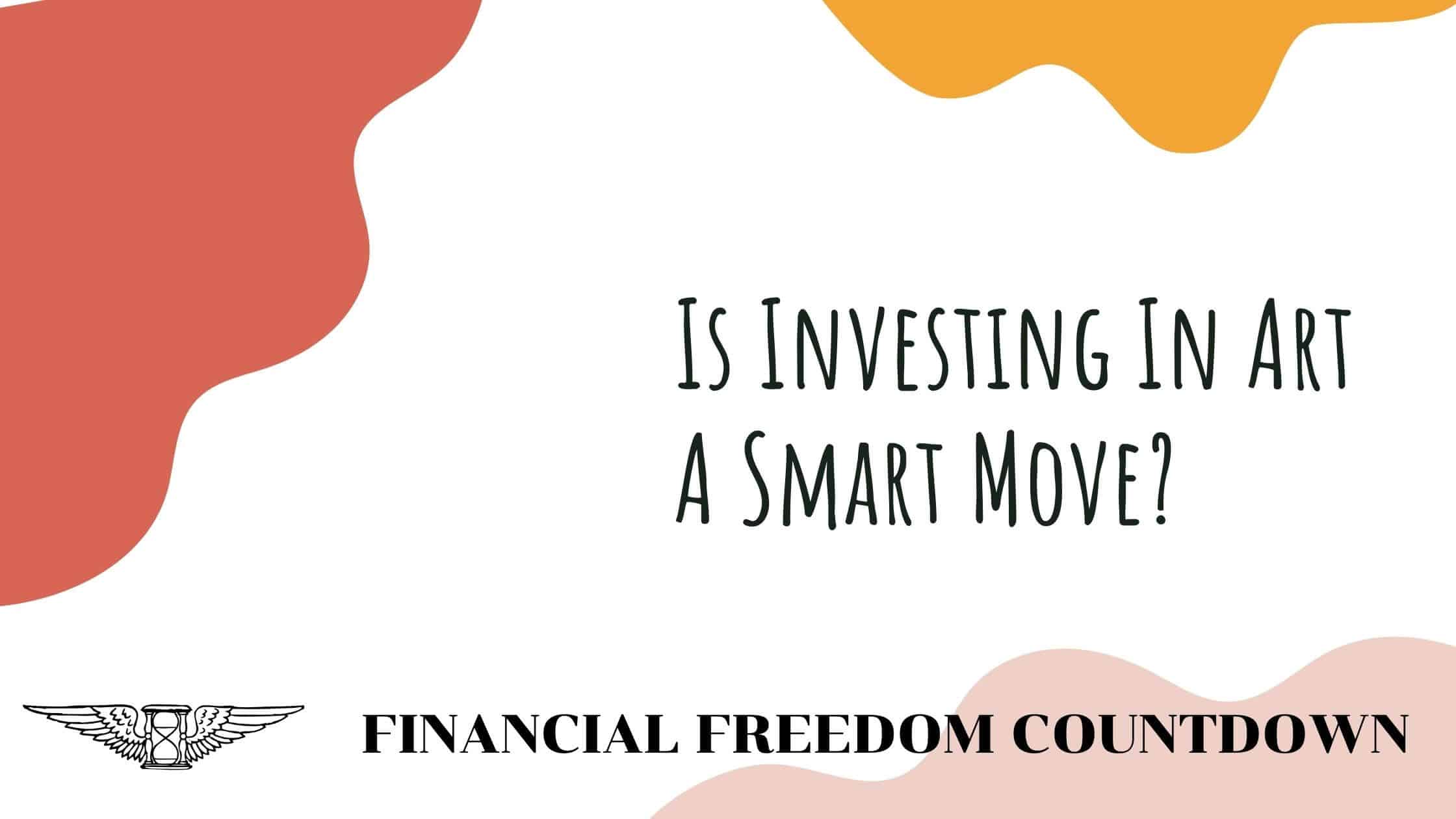
If you are looking to diversify your investment portfolio, you may wonder if buying art is a good idea. Reviewing the list of best assets to own, collectibles stand out as a unique alternative investment.
Buying art is intimidating, especially if you don’t have an eye for it. You have probably read the warnings to purchase pieces that you love so that you can enjoy them in your home. While that may be a worthwhile goal, it is not always sound investment advice.
The main difference between investing in art and collecting art is that people who invest in art buy artwork because they want to make money. Collectors collect art because they like blue-chip art and enjoy seeing them every day. They may also sell some of their acquisitions, but it’s not their primary motivation for buying.
It is not easy to know which pieces will hold their value and increase in worth over time, and many people end up losing money on their investments. Today we will explore the pros and cons of investing in art and learn how to invest in art if you are not a billionaire.
What Art Can You Invest In?
You can invest in art in both digital and physical formats.
Digital
It’s now feasible to invest in digital art thanks to the development of cryptocurrencies. A non-fungible token (NFT) allows you to own unique digital artwork, such as photos, video clips, and music. Beeple, a renowned digital artist, set a new record for his work with Everyday – The First 5,000 days, selling for $69 million in March 2021.
Physical
While we usually think of paintings for blue-chip art investment, you can invest in photographs, sculptures, street art, and just about anything else. You may invest in contemporary and historical works of art and their prints, as well as the original pieces themselves.
Almost anything can be regarded as an investment based on the artist’s fame and the artwork’s notoriety:
- Maurizio Cattelan had a banana duct-taped to a wall sold for $150,000 at Art Basel Miami.
- Christie’s 20th Century art evening sale included a 67 million-year-old Tyrannosaurus rex skeleton named “Stan,” sold for $31.8 million compared to earlier estimates of $8 million.
- Italian artist Salvatore Garau sold his invisible sculpture titled lo sono (“I am”) for over $18,000. “It is a work that asks you to activate the power of the imagination,” Garau said.
You now have a wide variety of options when considering investing in art.
Is Art A Good Investment?
Yes, art can make an excellent investment if you are knowledgeable enough to invest in the right artists before becoming famous. One of the reasons you will want to consider buying art as an investment is that the value of art is not closely tied to the stock market. Therefore, the best way to invest in art is to diversify your portfolio. If your stock portfolio’s value goes down, your art investment portfolio could be steady.
However, buying art isn’t for everyone and is inherently risky. The global art market’s past success is no guarantee of future gains. While there is a risk, as with any investment, there is an opportunity to make money when you invest in art., considering the growing interest in art.
Make sure you evaluate the pros and cons of investing in art as an asset class.
Pros Of Investing In Fine Art
Artist support
The renaissance era was when wealthy individuals would support artists by buying art pieces created by them. While most art sold at auctions nowadays is based on established artists, you can support upcoming artists in their creative efforts.
For example, a digital piece of art in the form of a Non Fungible Token (NFT) by Mike Winkelmann, also known as Beeple, sold for $69 million in 2021. Individuals investing in cryptocurrencies were able to show their support to upcoming digital artists using the auction format.
Tangible Asset
Yes, art can be considered a tangible asset. Unlike stocks or bonds, art is something you can hold and enjoy. It makes art a valuable investment option, as you can enjoy the artwork while also seeing its value increase over time.
Diversification
The value of fine art is not closely tied to other major asset classes. Therefore, when the stock market is going down, you may be able to make up some of your losses with an investment in fine art.
In most cases, blue-chip art appreciates over time, especially if you made wise decisions in identifying early trends.
Enjoyment
For some people, part of the appeal of investing in art is to gaze upon something beautiful. Many investors purchase blue-chip art and display them in their homes. Art has a function, and if you enjoy art, you can also derive pleasure from your investment. When stock markets tumble, it is less stressful than looking at your Personal Capital net worth dashboards.
Cons of Investing In Fine Art
High Purchase Cost
When you were considering should you invest in art, you should consider it a high-risk investment. Most fine art is sold for hundreds of millions, and the price tag is out of reach for most of us.
Lack Of Accessibility
Art has typically been sold through galleries and auction houses. It is hard for art investors not in the art scene to get invited to these exclusive events and be connected to a network of art dealers and gallery owners.
Transaction Fees
Art investors encounter high transaction costs in buying and selling art. Art auction houses often collect 20% to 40% of the sale price in commissions, and you have to pay taxes on top of that.
Ongoing Costs
Investing in art involves ongoing maintenance costs. It would help if you stored expensive art, usually in temperate and moisture-controlled environments, not to degrade. It would be best to insure art, which costs a fortune.
Knowledge
Many investors have held back from investing in art because they do not have enough knowledge. After all, you had to spot a new artist and pick up their works before they became famous, and that can be difficult to choose the best art to invest in.
Fraudulent Art
Unless you have a team of professionals who are well versed in the art you are buying, it can be hard to know the authenticity of your purchase.
Lack Of Liquidity
Art is a highly illiquid investment. Because of the high cost might take years for your artwork to sell at auction. It would help if you considered art to be a long-term investment.
How Do I Start Investing In Art?
There are several ways that you can invest in art. The old advice to buy what you like and hope it increases in value is applicable. You must find art you enjoy carefully choosing pieces and hoping their value increases.
Auction Houses
Auctions houses typically sell artwork that a person has previously owned and is attempting to resell. There are both in-person and online versions of auction houses. Sotheby’s and Christie’s are two of the world’s most well-known and high-end auction firms. You can bid at auctions and buy art. You are likely to pay a hefty commission fee for blue-chip art and have limited purchasing power.
Art Galleries
Galleries allow you to view a broad selection of artworks and often provide you the opportunity to meet with the artist. Many art galleries in NYC or LA are open by invitation only. You can talk with the artist and understand more about the artwork in a relaxed atmosphere.
Compared to auction houses, art price points at galleries are often lower. You still have to do your research to see if the item has potential beyond being a decoration in your house. You may discover excellent local galleries depending on your location. Art galleries are a perfect way to support newer artists.
Art Fairs
Art fairs are more informal than galleries and accessible to practically everyone. Buying art at fairs helps directly support emerging artists within the local community.
The pricing is fair, but thorough research is required as with all art investing for beginners. While you could discover hidden gems that look fantastic, the local emerging artists may never become famous, and your art may never appreciate. Be sure to buy art pieces you truly love and don’t mind holding forever.
NFT marketplaces
With cryptocurrencies now included in several portfolio models, one cannot ignore NFTs as art. If you’re more interested in digital art, you may follow talented artists and acquire intriguing NFTs by joining an NFT market. Some platforms also provide NFT “drops,” which are digital collections of artwork that might be valuable in the future.
NFTs are available on marketplaces such as Nifty Gateway, OpenSea, Rarible
Cryptocurrency exchanges also offer opportunities to buy NFTs. The advantage of buying on regulated US exchanges is better protection than marketplaces.
Art Investment Funds
Art critics established art investment funds to assist up-and-coming artists in the past. They organized art funds as syndicates, with each member contributing to buy a collection of works for sale. The artists were paid 20% of the funds’ profits in addition to the money they received for their original creation. The droit de suite, or artist’s resale right, is used to describe this.
Art investment funds now rely on art indexes. These indexes collect a large amount of data allowing you to spot early trends in the market. Your artwork picking improves when you use the data from an art index. Art indexes will enable you to choose artwork where you own the whole piece by betting that the information in the database is correct. Making money in art investment funds often requires seeing trends earlier than most investors.
You can also invest in an art index fund. These are structured investment vehicles, and the art funds use a professional manager who buys and sells art. Artprice established the Artprice100 Index in 2018, which focuses on blue-chip artists. Masterworks has also created indices built using data sourced from auction sales, such as its Contemporary Art Index and Impressionist Index.
Most art indexes have proprietary data not available for individual art investors to invest. Unfortunately, there is no such thing as an art ETF or art fund for investing unless you are an ultra-high net worth individual.
Art Investment Platform
An art investment platform allows you to own expensive and famous paintings without dealing with auction houses; you have alternatives via art investment platforms. Art investment platforms have enabled fractionalized art ownership. Fractionalized art investing lets you join with other investors to own part of a piece of art. It lowers your investment risk while also eliminating the costs of maintaining a work of art. The idea is similar to real estate crowdfunding, where individuals pool money to buy an entire apartment complex or office building.
Advantages of Fractionalized Art Ownership
Easy Access
Art has typically been sold through galleries and auction houses. It is hard for art investors not in the art scene to get invited to these exclusive events and be connected to a network of art dealers.
Lower Buying Cost
Up until now, investing in art has only been for those with a high net worth. The art world continues to set record high art prices, so it can be challenging for a young investor to buy a single piece. With fractionalized art investing, you split the cost of the artwork with all the other investors. Therefore, the cost of owning a painting becomes significantly lower.
No Maintenance cost
Since you do not have the physical art in your possession, you do not have costs associated with storage and maintenance. Also, you do not need insurance to protect the art piece from damage.
Diversification
When investing in any asset class, it is important to be diversified even within the asset class. Art investment platforms enable you to invest in several different artists, styles, and periods, thereby spreading your bets in your art collection portfolio and reducing your risk.
To reduce the dangers associated with art buying, diversify your art collection by purchasing work from various artists, artistic styles, and historical periods.
Since you can own a fraction of a piece of art, your loss is much smaller if you make a poor choice. It is a significant advantage to investors who are just getting started and cannot afford to lose a large amount of money.
Fraud Reduction
Investing in art has been risky due to several professionally created fake art pieces in circulation. Unless you have a team of experts who can validate the authenticity of your purchase, it is hard to know if you are buying genuine art or a cheap fake.
Art investment platforms have access to art experts who can validate the art investments before purchasing.
Liquidity
Although art investment platforms are not as liquid as the stock or bond markets, you can evaluate options for lock-up and sale. Since art is fractionalized, it can be a massive advantage if you need to liquidate because you do not have to find a millionaire who shares your interest in art that has the space for the particular piece you own.
Best Art Investment Platforms
Yieldstreet
Yieldstreet enables investors to invest in alternative asset classes such as fine art, ships or tankers, lawsuits, settlements, and real estate.
Unfortunately, Yieldstreet is only open to investors meeting the accredited investor qualifications. They do have an option for non-accredited investors to invest in a Prism fund which contains all their other investments. You have no control over what is being bought and sold in the fund and cannot select a particular piece of art or specific investment.
Masterworks
One place where you can do fractional art investing is Masterworks. They use an extensive database to choose what art will increase in value. Like with the stock market, there is no guarantee which pieces will increase in value and which ones may lose money.
Masterworks tries to buy the art at a reasonable price. Their team looks all over the world to find the best artwork. Then, they secure the art and issue an offering with the Securities and Exchange Commission, allowing you to purchase shares of the artistic masterpieces.
Masterworks typically keeps paintings for three to ten years before selling them. The artworks are initially exhibited in an art gallery in New York City, where individual investors may view them until a private collector purchases them. After the sale, Masterworks shares the remaining proceeds among investors and charges 20% of the profits as fees.
If you need to liquidate your holdings before Masterworks sells the artwork, you can do so on Masterworks’ secondary market. Keep in mind that there is no guarantee that your shares will sell.
Masterworks investing may be an excellent option for those who love the thought of investing in art but cannot afford to do it on their own. Investing in the Masterworks secondary market often allows you to start with an even smaller Masterworks minimum investment, and you do not pay any transaction fees.
You do not need to be an accredited investor to invest with Masterworks.
| Yieldstreet | Masterworks | |
|---|---|---|
| Investments | Art, Real estate, tankers, business loans | Specialized in Art |
| Availability | Restricted to accredited investors | Open to all |
| Management Fee | 1% to 4% annually (depending on offering) | 1.5% annually |
| View Purchase Art | No | Yes. Gallery for investors |
| Secondary Market | No | Yes |
FAQs On Investing In Art
What makes art worth investing in, as opposed to other kinds of investments?
Other than financial rewards, there are many reasons why people invest in art. Some do it for the social status, others because it’s convenient (you don’t have to keep track of fluctuating stocks, etc.), and some just enjoy art so much that they want to be able to immerse themselves in it as much as possible.
What are some of the most common ways art is judged by its potential value?
There are several ways that art can be judged for financial worth, but the main one is through market trends – i.e., how well does this artist’s work sell for? There are other ways too, but they vary from artist to artist. For example, you could look at how many times an art piece has been loaned to museums or bought for famous collections in the past.
When it comes to art, it’s important to remember that authenticity is vital. Art can be faked in many ways, but the simplest (and easiest to determine) way is through authentication by a reputable dealer or broker.
Why is art often considered an “exclusive” investment?
Art is considered exclusive partly because of the authentication process weeding out fakes and partly because it’s relatively complex for beginners to get into the market without knowing dealers or other experts in this field.
Another reason is that art prices are not as open. It is easier to evaluate a rental property or stocks compared to art. Since every art piece is unique, the art prices are usually set by one or two people. In contrast, stock prices are constantly trading daily, with several hundred analysts covering each company.
Where should I begin if I’m interested in investing in art but don’t know much about it?
If you want to invest in art, the best place to start is at a museum or gallery. Talk with people who work there as art advisors, and see if you can see any upcoming exhibitions that might interest you; this way, you’re also likely to learn a lot about the artists.
The other good place to start is joining discussion forums or groups where people like art congregate (i.e., online communities). There are many such communities on the web, and you’re likely to learn a lot by participating.
If you want to learn more about paintings, you could also sign up for Masterworks and read their curated newsletters regarding pricing, famous artists, and historical price trends.
Is investing in art more complex than other types of investments?
Not necessarily, as long as you understand the market and don’t expect it to behave like a stock or bond market. There is some risk involved, but it’s on par with most other forms of alternative investments like fine wines or vintage cars.
Investing in art takes a long time and requires a lot of patience, partly because there are many ways that art can be faked. Work with reputable dealers who have good relationships with the artists you’re interested in, and always authenticate your pieces before you go ahead and buy. Or you could always look at art investment platforms to ensure you purchase genuine works of art.
Are there any legal issues involved with investing in art?
Sometimes stolen art is available off-market, which is illegal. Also, an art collector selling you historical artifacts might not have the required permission to sell them. Lately, there are also question on the authenticity of a piece. Ensure that you work with a reputable dealer and always have your artwork authenticated before investing in them to avoid possible future lawsuits. Or rely on investment platforms like Masterworks to do the leg work on authenticity for you.
You cannot invest in collectibles in your retirement account from an IRS standpoint. Always consult a tax expert when dealing with retirement accounts.
I’m interested in paintings other than those done by famous artists – what should I look for?
Investing in art is a highly personal decision – therefore, you should look for pieces that reflect your personality. Some people prefer abstract artwork, while others like more realistic representations; this choice is entirely up to you.
The other thing you might want to do is buy into art styles that are constantly in demand (i.e., the market tends to go through cycles). For example, pop art has been in high demand recently, and it should continue to be so for the next few years.
Alternately, you might want to look for a piece that is a continuation of a style that has already been well-received and is a classic.
As morbid as it sounds, dead artists’ fine art is generally more valuable than living artists, but there are always exceptions.
What other forms of art are good investments?
You might want to consider investing in photography or sculpture and installation art. Other options include buying limited edition items.
To invest, you need to know as much as possible about the artist or art movement you’re looking into. An excellent first step would be to find out as much as you can online (there are many sites dedicated to art history and appreciation). It would help if you also learned as much as possible about any specific artist or movement; try reading biographies, looking at exhibitions, and listening to whatever other information you might be able to get your hands on.
Where should I go to buy my first piece of art?
The best place to start is with local dealers – they can tell you about upcoming auctions or notify you when they will sell certain pieces. If you live in a big city, there might be an art gallery where you can also browse the art collection, talk to an art advisor and make a purchase. Also, check out art sales endorsed by the local art community. Looking at online art platforms like Masterworks for fractionalized art could be another option.
How do auctions work?
Auctions are an excellent way to buy art, as well as other antiques and objets d’art – all you have to do is visit as many galleries as you can until you’re comfortable with the process. Auctions usually start at a base price and increase incrementally (by either ten or twenty percent); most of them also allow the bidder to place a bid on the telephone, which is often more convenient for those who aren’t physically present.
Do all pieces of art or antiques require insurance?
Almost certainly, if you take possession of physical art and want to ensure that you recoup your investment if the art piece gets damaged over time. Insurance is something you should always look into when purchasing anything that could potentially be worth thousands or even hundreds of thousands of dollars to display in your home.
Is investing in art a smart move?
Art is an exciting investment, but it’s not for everyone – it all depends on the kind of returns you hope to get, how much money you’re willing to invest, and how patient you are. Art is also risky. If you’re only looking to make a guaranteed profit, then art probably isn’t the best option for you. However, if you want to diversify your portfolio and appreciate art, it is worth considering art investment.
As per Deloitte, the consulting and advisory firm “Art and collectible assets can represent sizable assets for many HNWIs & UHNWIs. Art proves to have longevity and substance as an alternative asset class. There has been a growing interest in art-related services among the financial community and an increasing focus on portfolio diversification from clients.”
How much money do you need to invest in art?
The amount of money you’ll need to start investing in art is determined by what you choose to buy. You may require millions of dollars if you’re looking to acquire a well-known piece of artwork. Purchase art at galleries, art fairs, or NFTs is more affordable. Fractionalized art investment platforms like Masterworks enable you to start art investing without a lot of money. Individual investors can buy shares of famous paintings for $20 each, with a minimum investment of $1,000.
Is it worth investing in copies of art?
If individuals can’t afford original works of art, they have options to buy copies or reproductions. Gicleé is a kind of copy with the highest quality print available today. Giclée prints are considerably sharper than other kinds of images. Many dealers consider these “museum quality” and even give you a certificate of authenticity. It’s important to remember, though, that it’s just reproduction and not the same as original artwork.
Currently, no data is available on investing in art copies for price appreciation.
Is art investing profitable?
Art may be profitable, just like any other investment. However, you might not know which artwork has the potential to be the most lucrative all of the time. You might make a lot of money by investing in art if you pick the appropriate pieces from competent artists. You could also lose money if the art never appreciates.
A paper by NYU Stern university on Art Markets During Wars and Recessions highlights art as a good long-term investment and the diversification benefits of blue chip art.
What are the risks of investing in art?
There are a lot of risks and expenditures associated with art investments, especially if you are buying to display in your house. Illiquidity, counterfeits, transaction and maintenance costs, lack of transparency, and fluctuating prices are just a few of the risks. As with any investment, you must weigh the risks and be ready for the potential downside.
Final Thoughts On Investing In Art
Art investing can pay off handsomely, but it is risky. Blue-chip artists such as Andy Warhol, Banksy, and Pablo Picasso are significant revenue generators in the art market worldwide. The trick is to discover a future historically significant artist before becoming famous. However, one needs to have the skills, network, knowledge, and luck to identify the right artist and trend.
For example, Andy Warhol’s The Shot Marilyns, which pays tribute to Marilyn Monroe, was sold at Sotheby’s in London for $955,433 in 1992 and was sold again in 2015 for $44 million. That painting was later sold at Christie’s in the same year and only fetched $36 million. Therefore, it can be challenging for buyers to know what pieces will sell well and help them make money.
Investing in fine art can be great, while others find it a miserable experience. Therefore, you will want to consider the pros and cons of investing in fine art before you get started.
Lastly, it’s often said that individual investors should invest first and foremost in artists they like and who inspire them – this way, you’re more likely to be satisfied with your investment as time goes on.
You should think of buying art as an investment that offers some chances to make money and diversify your portfolio. It can be a great option to pass down generational wealth as well. However, there is risk involved in the process, so you have to use discretion when going forward with your plans.
Art is no longer an exclusive investment restricted to billionaires. Fractionalized art ownership via Masterworks provides an opportunity to own a piece of the traditional art market. Crypto exchanges offer options to buy digital art in the form of NFTs.
Readers, have you ever invested in art, either physical or digital format? Do you believe fractionalized art ownership democratizes the ownership of art?

John Dealbreuin came from a third world country to the US with only $1,000 not knowing anyone; guided by an immigrant dream. In 12 years, he achieved his retirement number.
He started Financial Freedom Countdown to help everyone think differently about their financial challenges and live their best lives. John resides in the San Francisco Bay Area enjoying nature trails and weight training.
Here are his recommended tools
Personal Capital: This is a free tool John uses to track his net worth on a regular basis and as a retirement planner. It also alerts him wrt hidden fees and has a budget tracker included.
Platforms like Yieldstreet provide investment options in art, legal, real estate, structured notes, venture capital, etc. They also have fixed-income portfolios spread across multiple asset classes with a single investment with low minimums of $10,000.

